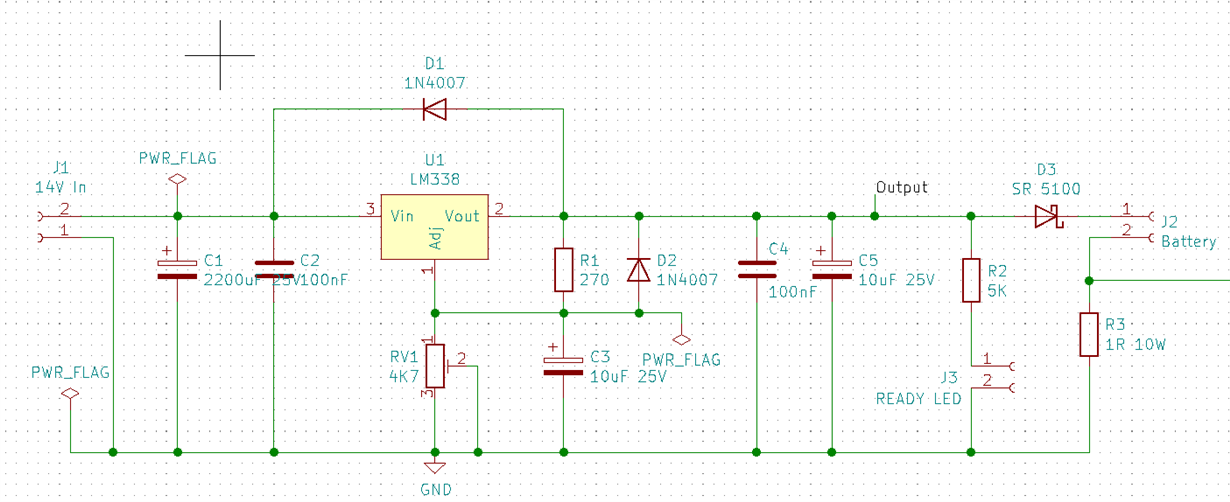Hi,
I'm building a simple battery charger for my personal hobby project. The circuit is based on the reference design from the datasheet with input voltage of 15V (initially had been 14V but I changed it afterwards) and output voltage of 13.5V as seen below. My intention is to charge a small car battery with continuous charge of 5A. I've put the IC with a beefy heatsink and a 120mm cooling fan to mitigate power loss.
After building the circuit, it was working fine. The output was stable at 13.5V. Then, I tested it to charge an old motorcycle 12V battery with 7Ah capacity and it drew 0.5A current, although there was some fluctuation, between 0.5A up to 1.1A. I let it charge for about 2 hours to see if it really worked.
After 2 hours of charge, I turned it off and let it rest for a few hours. After that, when I tried to test it again with better load, the output just stuck at 14.7V. The trimpot doesn't do anything to set the output voltage. Also, when I checked the voltage between the output and the adjust pin, it was 0.5V, way below the intended 1.25V as the datasheet says. I assume that the IC is broken now. What I don't understand how the IC is broken, since the whole 2 hour test, the IC only get a bit warm. Could it be that I get some counterfeit product?


